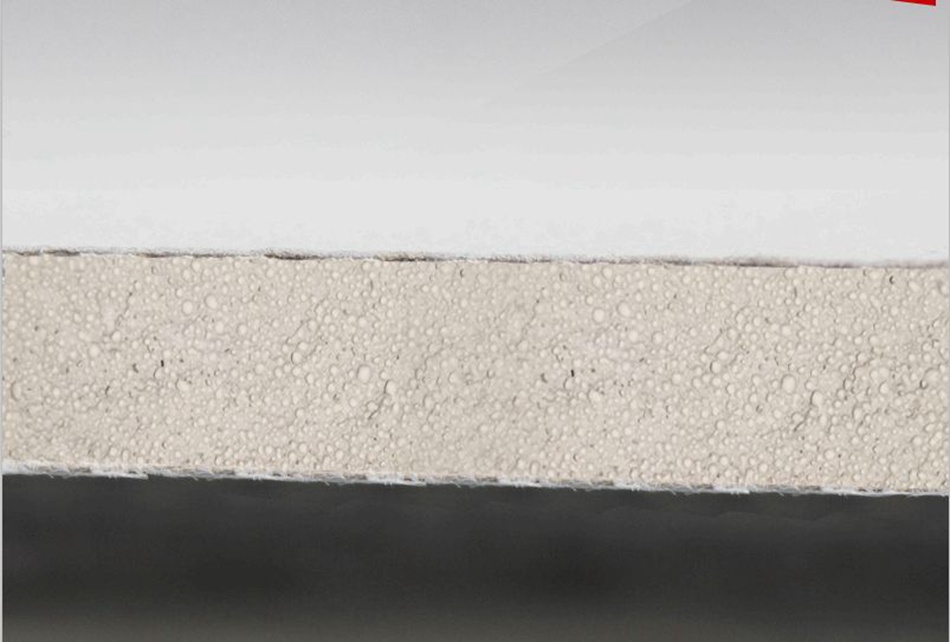- High End Gypsum Board System Solution Provider
Is there any bubble in the core of the gypsum board after it is cut open? Whether it's good or not, there's a lot of knowledge involved
Gypsum board, as a commonly used building material, should be familiar to everyone, after all, it is common to see it in daily life. But in reality, how to distinguish between good and bad gypsum boards, even some professional construction personnel lack relevant knowledge, and even think that gypsum boards are similar. In specific scenarios, they do not choose functional gypsum boards and still use standard paper faced gypsum boards, which brings many unnecessary construction quality problems. In this article, Jason's gypsum board editor will take the most common appearance feature of gypsum board, the bubbles in the board core, and talk about the university question.

Why are there bubbles in the core material of gypsum board? Some people may think that the presence of bubbles is a quality issue? In fact, this is not the case. Bubbles are intentionally added in the production process. We need to first understand that the raw material for high-quality gypsum board is environmentally friendly desulfurization gypsum. During the processing, additives such as starch inorganic fibers are added to improve the physical properties of the gypsum board core, making the board more sturdy and increasing its weight.

As a lightweight material that replaces existing building materials such as brick walls and blocks, reducing self weight is undoubtedly an important technical indicator. At this point, for R&D engineers, how to reduce the weight of the product while maintaining its physical indicators as much as possible has become a key research goal. The final technical result obtained through a large number of experiments is to carry out "foaming process treatment" in the mixing process of gypsum board processing, which means adding corresponding foaming agent additives to produce bubbles in the gypsum slurry, thereby maintaining the presence of bubbles in the gypsum board core material during the initial setting stage. The gypsum board processed in this way will form the gypsum board with bubbles after cutting as we see. The goal of reducing product weight in this way is considered achieved.

But having bubbles is not enough, what's more important is that the bubbles need to be fine, dense, and even. If there are defects in the foaming technology and the control methods cannot keep up, it will cause bubbles to have different sizes and continuous bubbles, which will seriously affect the hardness and strength indicators of the board, leading to the problem of soft boards not eating nails, and affecting the final use function. Only by fully foaming and ensuring that the final solidified gypsum board core material has uniform size and density of bubbles, can the physical performance parameters that gypsum boards should have, such as weight, hardness, load, flexural strength, etc., be ensured to the greatest extent possible. Jason Gypsum Board, as a manufacturing enterprise with core technology of gypsum based products, has industry-leading foaming technology, relevant formulas, and high-precision technical personnel, which can ensure that each batch of gypsum board products meet the technical parameters and produce stable products.

On the other hand, the fine and uniform bubbles also have an important advantage, which is that they can increase the toughness of the board and give it a certain degree of curvature and plasticity. Uniform spherical small bubbles are filled in the board core, and at a certain volume, the gypsum in the board core is actually supported more densely, so that the physical properties of the paper faced gypsum board can be well preserved or even improved. By combining the effects of inorganic fibers, the bending diameter of the board is maximized. Jason gypsum board products have been tested to achieve a curvature of 900mm for 9.5mm thick boards and 1200mm for 12mm thick boards. This parameter, combined with Jason's customizable lightweight steel keel, can effectively achieve the design and construction of some shaped ceilings or curved partition walls within the curvature range, without the risk of cracking and deformation caused by insufficient toughness of the board.

After reading this article, I believe everyone should have a sufficient understanding of what the bubbles in gypsum board boards are. When choosing to purchase gypsum board products, it can also be used to determine whether the quality of the board is qualified and the strength is sufficient. At the same time, Jason's gypsum board editor also reminds you that in addition to using high-quality gypsum boards, different types of gypsum boards should also be selected for different application scenarios. Only by using materials can we achieve more beautiful and durable construction results.
(Some of the images are from the internet. If there is a possibility of infringement, please contact the editor to delete them.)
